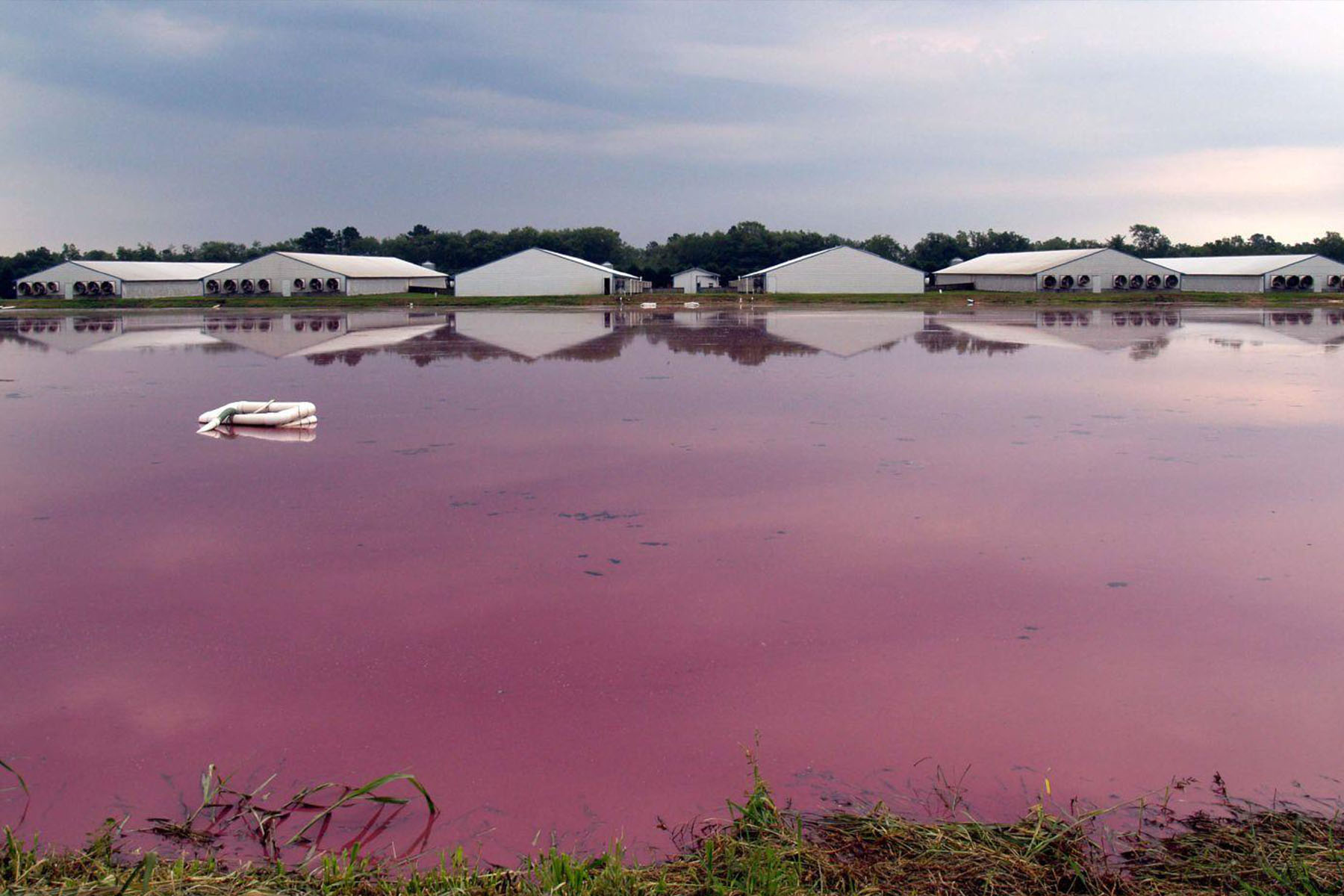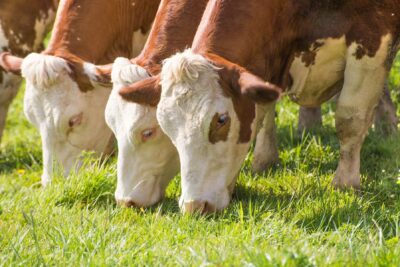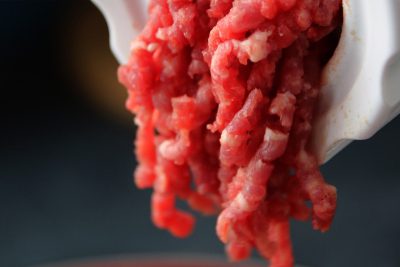Imagine that your family has lived in the same rural county for generations. Two years ago, a new neighbor moved in—a huge corporation, we’ll call “Mr. CAFO”—and built four massive warehouses, each containing 8,000 pigs being raised for meat and living in horrible, intensive confinement. “CAFO” stands for “concentrated animal feeding operation,” sometimes called a factory farm.
Mr. CAFO’s pigs produce massive amounts of feces and urine, which is piped away from the building and into huge uncovered ditches called “lagoons”. The air inside these warehouses would sicken and kill the pigs, but for the giant fans that blow it out of the buildings 24/7. That air, which contains ammonia, hydrogen sulfide, carbon dioxide and methane, ends up in your community!
You can no longer sit in your backyard, because the odor from Mr. CAFO is causing you to experience headaches, dizziness, and nausea. You try to sell your family’s home to move elsewhere, but you learn that the value of your home has plummeted to one-half of what it was before Mr. CAFO moved in. No one will buy it.
Factory farms make people sick
Sadly, this is the reality for many families in states where CAFOs have moved into the neighborhood. And, too often, those families lack the means and political clout to fight back.
In Iowa, the largest pork-producing state in the U.S., with over 23 million pigs raised and killed for food per year, a 2006 study by the Institute of Science, Technology and Public Policy reported the following impacts on neighbors:
- People living within two miles of a CAFO with 4,000 pigs experience more respiratory symptoms, depression, confusion, fatigue and tension than are experienced by people who don’t live near a CAFO
- People living near CAFOs experience gastrointestinal, stress-related, and respiratory symptoms from the odor pollution
- Children who attend schools located near CAFOs may be more likely to experience asthma
People living near CAFOs experience increased illness rates - The land values and quality of life for people living near CAFOs decreases noticeably and consistently
According to Iowa farmer and resident, Rosemary Partridge, who is forced to live next door to a CAFO with 30,000 pigs, “During the summer we can’t keep our doors or windows open because of the stench. If I’m outside, my clothes smell like pig feces when I come home. Sometimes it gets so bad [my husband and I] get headaches and feel nauseous.”
Neighbors of Factory Farms Fight Back
In North Carolina, the second largest pork-producing state, residents living near CAFOs have filed 26 separate nuisance lawsuits against Smithfield Foods, “the world’s largest pork process and hog producer” and its subsidiary, Murphy Brown.
So far, the nuisance cases that have gone to trial have resulted in landmark victories for the neighbors of CAFOs, with juries awarding large damages awards for the harms they are suffering. Unfortunately, the State of North Carolina, siding with Smithfield, has passed a law that will limit the amount of damages that families can recover from the corporations that are ruining their communities and their lives.
In 2018, the Iowa Supreme Court upheld the right of neighbors to sue and recover damages for the nuisance caused by nearby CAFOs, because the noise and odors from the CAFO interfered with a neighbor’s right to enjoy his home and property.
Iowa teacher, Birgitta Meade worries about the impacts of CAFOs housing more than 25,000 pigs within five miles of her school. “I have concerns about our youngest children, the pre-kindergarteners, … [t]heir lungs are little, and they breathe faster than adults; I worry about their exposure.”
Let’s stand with these neighbors! What you can do:
- Get the facts. Learn more about all of the negative impacts of factory farms, and spread the word. Here are some sources for more information:
– Centers for Disease Control, Understanding Concentrated Animal Feeding Operations and Their Impacts on Communities
– Union of Concerned Scientists, CAFOs Uncovered, The Untold Costs of Confined Animal Feeding Operations. - Learn about how the neighbors of CAFOs are impacted and how they are organizing and fighting back.
- Contact your local and state representatives and make your voice heard. If your state has a “right to farm” or “ag-gag” law in place, tell your representative that you oppose that legislation.
- Follow and support the ground-breaking work being done by the first and only Animal Law Litigation Clinic focused exclusively on farmed animal issues.
- Don’t let your consumer dollars support the meat, dairy and eggs industries, industries that are harming humans, animals and the environment.
By Joyce Tischler, Professor of Practice, Animal Law, Center for Animal Law Studies at Lewis & Clark Law School




